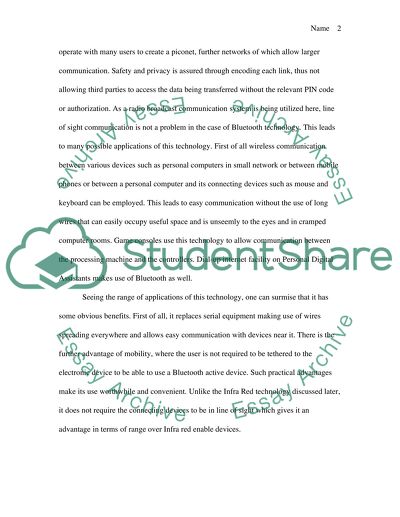Cite this document
(Comparing Bluetooth and Infrared with Cable Based Communication Coursework Example | Topics and Well Written Essays - 2000 words, n.d.)
Comparing Bluetooth and Infrared with Cable Based Communication Coursework Example | Topics and Well Written Essays - 2000 words. https://studentshare.org/technology/1514353-comparing-bluetooth-technology-and-infrared
Comparing Bluetooth and Infrared with Cable Based Communication Coursework Example | Topics and Well Written Essays - 2000 words. https://studentshare.org/technology/1514353-comparing-bluetooth-technology-and-infrared
(Comparing Bluetooth and Infrared With Cable Based Communication Coursework Example | Topics and Well Written Essays - 2000 Words)
Comparing Bluetooth and Infrared With Cable Based Communication Coursework Example | Topics and Well Written Essays - 2000 Words. https://studentshare.org/technology/1514353-comparing-bluetooth-technology-and-infrared.
Comparing Bluetooth and Infrared With Cable Based Communication Coursework Example | Topics and Well Written Essays - 2000 Words. https://studentshare.org/technology/1514353-comparing-bluetooth-technology-and-infrared.
“Comparing Bluetooth and Infrared With Cable Based Communication Coursework Example | Topics and Well Written Essays - 2000 Words”. https://studentshare.org/technology/1514353-comparing-bluetooth-technology-and-infrared.


